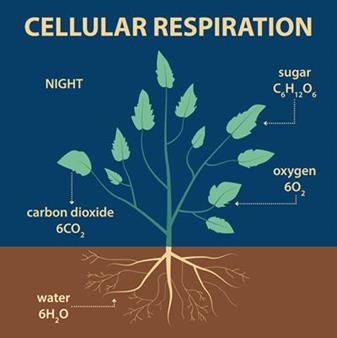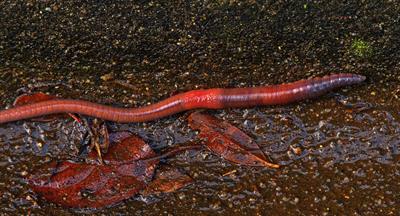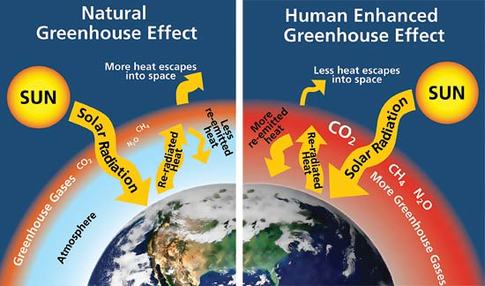PDF chapter test TRY NOW
Respiration:
During respiration, plants and animals release carbon in the form of carbon dioxide into the atmosphere.

Respiration in plants releasing carbon dioxide
Decomposition:
Carbon dioxide is also returned to the atmosphere through the process of decomposition. Decomposition is through microorganisms or invertebrates (like earthworm, beetle and millipede) that act on the dead and decaying organic matter, releasing carbon back to the atmosphere.
The organisms that feed on and decompose the dead and decaying plants and animals are called decomposers or saprotrophs.

Earthworm: An example of a decomposer
Other processes:
Volcanic activities also release carbon dioxide. Apart from the natural process that releases carbon dioxide, additional amounts of carbon dioxide are released into the atmosphere. This is due to the modernisation techniques, burning of fossil fuels, industrialisation etc., that alter the carbon cycle.
Human impacts on the carbon cycle:
An increased amount of carbon moves into the atmosphere due to the burning of fossil fuels and deforestation. Mostly it is emitted as carbon dioxide in the atmosphere. Carbon dioxide is a greenhouse gas.
Greenhouses gases such as methane, nitrous oxide, fluorinated gases and carbon dioxide accumulating in the atmosphere trap the heat energy inside the atmosphere leading to an increase in temperature.
When the amount of greenhouse gas increases in the atmosphere, the earth becomes warmer. This leads to the greenhouse effect that causes global warming. This leads to climate change, as well.

Effect of greenhouse gas - \(CO_2\)
The overview of carbon cycle:
Reference:
https://enhancedgreenhousegasemissions.weebly.com/enhanced-greenhouse-gas-effect.html
